What is Xeriscaping?
Xeriscaping: The Way To Sustainable Landscaping
by Rebecca
Many popular landscaping designs and home gardening methods currently utilized in society are contributing to man-made climate change and the overall depletion of the Earth’s resources. In addition to stripping soil and the need for frequent maintenance, the high water usage and constant tending of non-native plants can end up taking a financial toll on households and the environment at large. Luckily, xeriscaping is a trending landscaping technique that mitigates sustainability challenges and is highly cost effective.
Similar to other practices in the growing sustainable agriculture sector, Originally intended for yards in drought-tolerant climate zones, once completed, xeriscaping is meant to replace costly upkeep with little-to-no work.
Some of the primary concerns to xeriscaping are that it can be time-consuming and expensive to implement. This is not always the case. With proper research and dedication, this process can not only aid in the fight against the climate crisis, but it also provides homeowners with a more economically viable option than mainstream lavish lawns.
Read below for the steps to transforming any front or backyard into a fully xeriscaped space:
5 Steps to Xeriscaping
1. Take time with the design
This is where all the planning of the design and layout takes place. Utilize this phase to really analyze every aspect of how you would like your home’s yard to look. Start by measuring the area, and creating a sketch of what the blueprint looks like from both an aerial and forward-facing perspective. This will allow you to have a comprehensive understanding of exactly how much space is available and what elements can best appeal to you on a stylistic and practical level.
Things to consider:
- Color scheme
- Types of rocks
- Color of rocks
- Types of plants native to the region
- How much space to leave between rocks and plants
- The overall feel for the project
2. Allocate a budget for supplies and expenses
Upon completion of the overall design, and after acquiring a solid idea of what you would like to incorporate into the plan, create a budget for your project and list out each item you may need. This is one of the most important aspects of effectively integrating your design with the reality of what it will take to move from pen to plant.
While this portion of the planning process may seem daunting to some, it is also an opportunity to find creative solutions. There are several landscaping apps that you can turn to for assistance, and working with a professional is also an option. Regardless of the route you take, remember that however much you spend is saving you money in the long run.
Possible materials needed:
- Non-toxic stump remover
- Protective gear
- Native plants requiring low water usage
- Shovels
- Weed remover
- Sunscreen
- Rocks, sand, or gravel
- Lawn bags
- Metal edging
3. Take out current plants and weeds
The purpose of xeriscaping is to create a space that only breeds native plants, so that you don’t have to worry about trimming and taking care of your yard. In order to do that, any unwanted plants need to be removed.
When it comes to costs, time is money. When determining the level of resources you wish to spend here, the trade-off of doing everything yourself is that you save money. If you choose to work with a professional, the time and effort put in can go down significantly.
Factors that can influence this process:
- Budgetary allocation for plant removal
- Desired time frame to accomplish this task
- Willingness to put in the work yourself
- How many people in your household are able to help out
4. Add in native plants and xeriscape materials
Once the yard is gutted of unwanted shrubbery, it is time to add in any rocks and native plants that will bring your design to life. It is often recommended to use a paver base to protect visitors from tripping on any of the walkways you add in. From there, you’ll want to begin the planting and laying down of rocks or stones.
5. Add in any final elements
While a xeriscaped lawn is loosely intended to emulate as much of the natural habitat as possible, adding on some finishing touches can really give it a personalized feel.
Options to enhance your xeriscaped lawn:
- Potted plants
- Bluetooth plant monitors
- Bird features
- Solar panel lighting
- Water irrigation system
At the end of the day, the important thing is to remember that xeriscaping is part of a larger movement of igniting eco-conscious practices on the individual level. While we cannot use this as a way to omit the responsibility of policymakers, finding ways to reduce food waste, offset carbon emissions, and minimize soil depletion bring positive benefits on the environment and economy on an individual level. Whether you live in Ohio — like us — or call the south your home, there are plenty of xeriscaping practices you can implement into your yard. Check out the infographic below for even more tips.
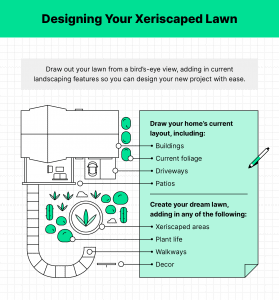

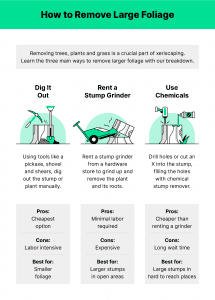
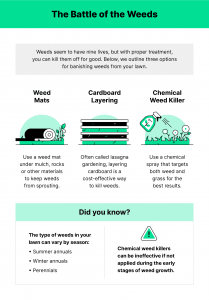
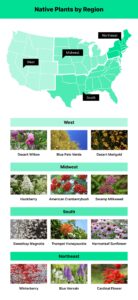
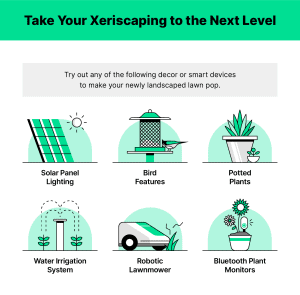

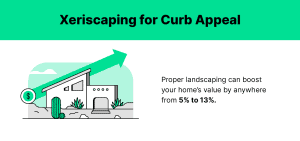
Rebeca Camacho is a content creator who focuses on weaving in insightful perspectives into various forms of communication. Her deep enthusiasm for digital marketing and crafting perceptive narratives has led her to write about various subjects from entrepreneurship to mindfulness.